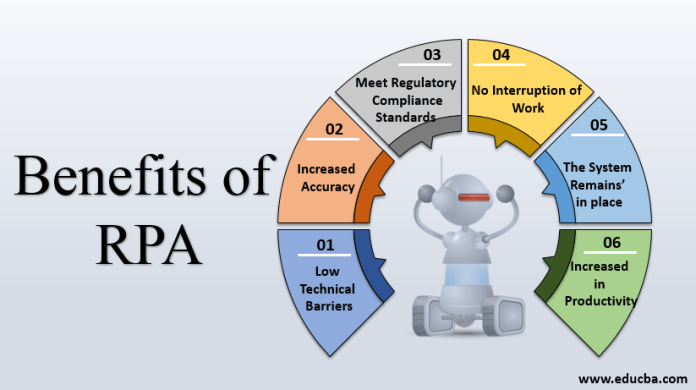Robotic Process Automation (RPA) is a technology that uses software robots to automate repetitive, tedious and manual tasks. This automation technology helps companies save time and money while improving overall efficiency.
Major types of robotic process automation
These are some of the major types of robotic process automation:
- Automated data entry – Automation can quickly and accurately enter data into appropriate fields. This eliminates errors from manual input and increases the accuracy of reporting.
- Automated document processing – RPA can take incoming documents, extract the relevant data, and store it in an organized format. This saves time and reduces manual paperwork.
- Automated customer service – RPA can automate customer support tasks such as answering frequently asked questions, handling complaints, and processing requests. This increases customer satisfaction by providing more efficient and accurate help.
- Automated workflow processes – RPA can orchestrate complex workflows across different systems, reducing manual labor and ensuring accuracy.
- Automated analytics – RPA can automate the gathering, cleaning, and analyzing of data from various sources. This helps to uncover insights more quickly and accurately than manual processes.
What tools are used in RPA?
RPA tools are used to automate processes in a variety of ways, including:
- Intelligent automation – This type of automation uses AI, machine learning, and natural language processing to automate more complex processes.
- Visual processing– RPA tools can recognize images, text, and other visual elements on web pages or documents.
- Workflow automation – RPA tools can create automated workflows that follow specific steps to complete a task.
- Screen scraping – RPA tools can “scrape” data from web pages or documents and store it in a structured format.
- Robotic desktop automation – This type of automation uses software robots to interact with applications on the desktop, such as opening files or entering commands.
- Application programming interface (API) integration – RPA tools can integrate with APIs to automate data exchange between different systems.
How does RPA work?
RPA is a form of artificial intelligence (AI) that utilizes ‘bots’ to automate and execute mundane, repetitive tasks. The bots are designed to work with existing applications within the company’s infrastructure and eliminate manual data entry processes that can be time-consuming and costly.
The best part about using RPA is that it can be implemented quickly without needing to overhaul existing systems or processes. This makes it an ideal choice for companies looking to optimize their operations without major investments.
The use of robotic process automation can also help improve accuracy and reliability. By automating mundane tasks, businesses can ensure consistency and reduce human error, resulting in fewer mistakes and improved data accuracy.
Automating business processes using RPA also helps create transparency and visibility across the organization. With RPA, organizations can track activities and monitor performance more easily.
Does RPA require coding?
No. RPA does not require programming and can be implemented without any coding knowledge. The bots are designed to interact with existing systems and processes, so no additional coding is needed.
However, if you have coding skills, you can tailor the bots to fit your specific needs and requirements better. Understanding basic programming concepts will also enable you to customize the bots and make them more efficient.







